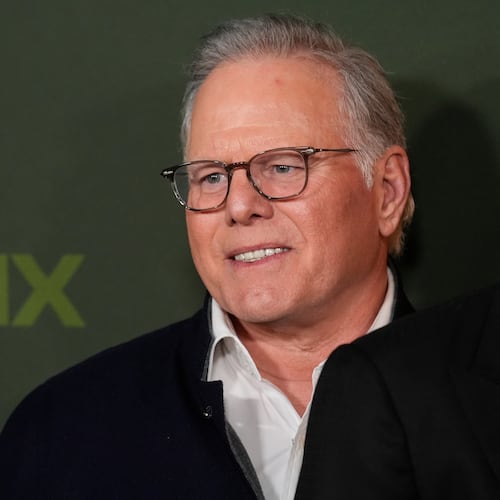Financing a film is difficult. It’s even harder when the director is fresh out of film school and trying to get their first few projects off the ground.
Add to that concerns about the trade war and loads of uncertainty in the entertainment industry, and it’s downright daunting.
The University of Georgia’s graduate program in film, television and digital media thinks it has a solution for this. It’s the only film school in the country offering a course dedicated to crowdfunding, or sourcing funding from the public via an online portal. It’s an alternative to the traditional financing models that have dominated the industry for much of its history.
For the 15-week-long course, students work with an outside filmmaker and learn how to successfully implement and execute a crowdfunding campaign. They learn how to build an audience, how to develop a marketing campaign and, above all, how to approach filmmaking with an entrepreneurial mindset.
Leading the class is Marty Lang, the director of the master of fine arts program in TV and film and a longtime filmmaker. This is the first year Lang has taught this course at UGA, having started his position around this time last year, but he has taught the course at other institutions, beginning in 2019. By this time, he had spent nearly a decade directing and producing films, almost all of which were crowdfunded, and he thought it was a valuable subject to teach. He looked around and saw that no other place in the country was offering a course like this.
“Film has been around for 100 years, and online crowdfunding has only been around since 2008 or so,” Lang said. “Because of that, there’s a majority of people who teach within film and TV production who had a career before that point and had no experience in it because it really didn’t exist.”
The entertainment industry is undergoing upheaval, with studios that had been spending big on content to populate their streaming services paring back their budgets.
This year’s course is centered around MFA alumna Clare Methe’s feature film “From Heaven,” which follows a young woman spending the summer reconnecting with her grandmother in a dying Southern town.
Here’s how the class works: Methe, along with two producers she appointed, created a budget of $10,000 for development expenses, which would cover the costs of creating an LLC to manage the film’s business operations, marketing and paying a casting director, among other line items, but not the film itself. That budget will come later.
They then created a campaign page on Seed&Spark, a crowdfunding platform designed for film and television projects.
Students in the class then spend the final four weeks of the course supporting Methe’s campaign. Every week, they’re split up into groups, where they either conduct public relations research, put together a social media marketing campaign, produce promotional videos or identify audiences to target for the campaign. In the months before the campaign launches, Lang will give lectures on topics like media entrepreneurship, audience development, social media and physical production that can be helped by crowdsourcing.
“It’s months’ worth of prep,” Methe said. “You have to sell something you don’t have, which is a little different from pitching a studio because it’s understood that this is the product. But for the public, you’re really relying on the unknown.”
The goal is to raise the full amount, but the campaign must hit 80% of its target for Methe to receive the funds. If the campaign is below that target, she will not receive the money. This is a condition set by most online crowdfunding platforms, set in place to ensure creators are not required to complete a project without all of the funds they would need.
Methe’s campaign ended in early May. The students raised $9,930 — just an inch away from their goal. A few people reached out to Methe after the campaign ended, still asking to donate, she said.
‘Opposite of gatekeeping’
Arranging funding for producing a film is complex. The process is typically completed during the development cycle and relies heavily on predicting how much money the film will eventually generate. Producers can draw from a number of public and private sources, such as debt financing from commercial banks, government subsidies, partnerships with studios or streamers or funds from venture capital firms or high net-worth investors.
In a way, crowdfunded creative projects have existed for decades. Think: filmmakers or musicians soliciting funds from family, friends or businesses to support the arts. But it became more of a viable mechanism of financing as online crowdfunding platforms like Indiegogo or Kickstarter were developed.
Early career filmmakers weren’t the only creatives making use of these platforms. In 2013, “Veronica Mars” creator Rob Thomas and its star, Kristen Bell, launched a fundraising campaign to produce a film based on the television series following its cancellation. In less than 12 hours, the film achieved its $2 million goal, eventually amassing upward of $5 million from more than 90,000 donors. That same year, Spike Lee raised about $1.4 million for his film “Da 5 Bloods” on Kickstarter. When faced with criticism, Lee said: “I’ve been making films since 1986, so I have a fan base. So I went directly to my fan base and said, ‘Help me get this new film made,’ and that’s what we did.”
Crowdfunding projects, along with self-distributing them on platforms like YouTube or Vimeo, gives filmmakers a sense of creative control over what they make. They’re not beholden to meeting the expectations of investors when it comes to timelines or the topics they can explore in the film. Lang calls crowdfunding the opposite of gatekeeping.
“We’re in a space right now where the creator economy is allowing filmmakers to become their own studios, and if they can make something and distribute it and monetize it, they don’t need the studios,” Lang said.
They still, of course, have to meet the expectations of their donors. That means delivering the project by the deadline and the incentives they’ve set on their campaign. For Methe’s project, the class awarded anyone who donated $25 a digital copy of a recipe from her grandmother, the ability to watch a scene as a preview of the feature for $100 and a signed poster from the cast and crew for $500.
One could argue that crowdfunding is trial by fire — that you don’t have to take a formal course to set up a campaign for a project. But Lang says it’s important to put students in a position where they have confidence.
For a long time, filmmaking has been taught with the method of throwing students in the deep end and seeing if they can swim, Lang said. That does a lot of people a disservice, he continued: If you can show them ways that they can be successful and train them before they go out, it’s much more likely that they’ll flourish. That means better movies.
“That means we’re going to have good movies and more movies,” Lang said. “Not all of them are going to be great, but if you increase the percentage that somebody is going to make something, that’s going to be meaningful.”
Now that the crowdfunding campaign has ended, the project is scheduled to film in the spring of next year. Methe said she’s relieved that the campaign is over. It was stressful and time-consuming — a 24-hour job, she said.
About the Author
Keep Reading
The Latest
Featured



